
Полная версия:
Ancestral home of the Indo-Europeans
Thus, it is hardly possible to postulate the name of a nut in the common Indo-European language as walnut, given the concept of the Near-Asian ancestral home of the Indo-Europeans, because Front Asia is not the original habitat of its wild forms. It can be assumed that the name of the nut in the common Indo-European language is not associated with «walnut», but with the hazelnut plant native to Europe.
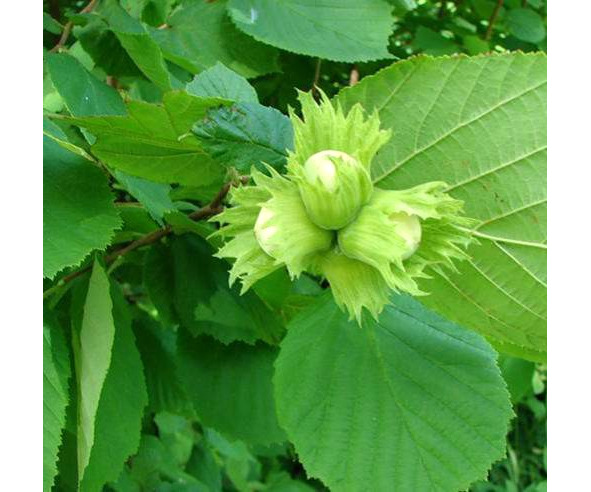
Pontic Hazel
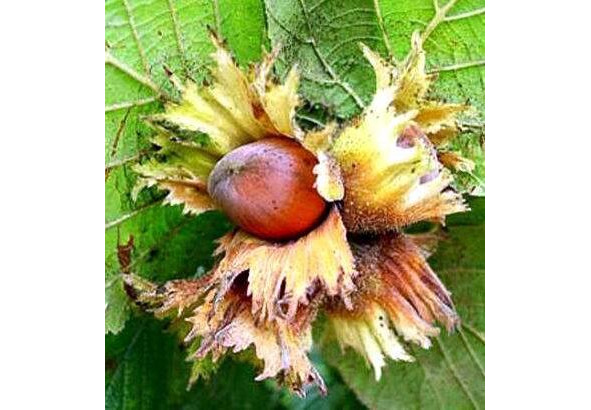
Variegated Hazel
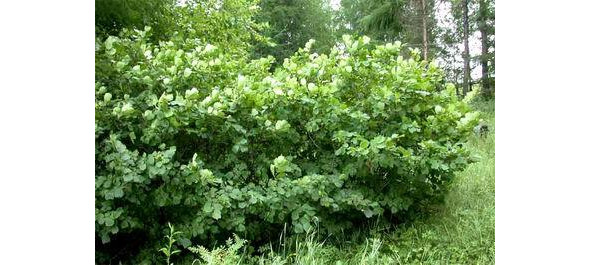
Common hazel
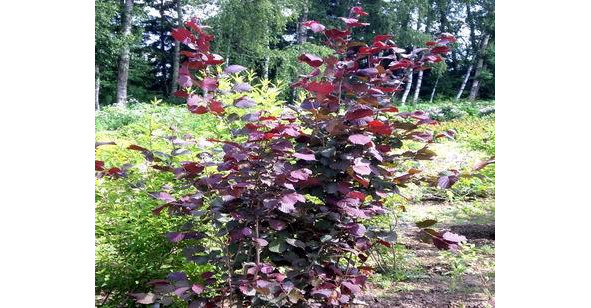
Large hazel
Mulberry, mulberry tree (Morus) (map No. 7), genus of trees of the mulberry family (Moraceae). Height 35 m., Crown spherical, broadly egg-shaped, very dense. The bark is brown, fissured. The fruit is a false, complex, juicy drupe, mulberry, up to 5 cm long, white, pink, dark violet, almost black. About 24 species, in East and Southeast Asia, and in southern Europe, in southern North America and northwestern part of South America, partly in Africa; in the USSR – 4 species in the south of the European part and in Central Asia.
Grown for the sake of obtaining leaves for feeding silkworm, as well as fruits.
The fruits are sweet or sweet and sour (10% sugar), used for food in fresh and dried form, as well as for making wines. The wood is dense, elastic, heavy, and is used as a building and ornamental material in carpentry and cooperage. To feed the mulberry silkworm, white mulberry (M.alba), silkworm (M. bombycus), multilobular mulberry (M.multicaulus) are cultivated, and black mulberry (M.nigra) is also used to produce fruits. Mulberry is drought-resistant, relatively undemanding to soils, salt-tolerant, and resistant to waterlogging.
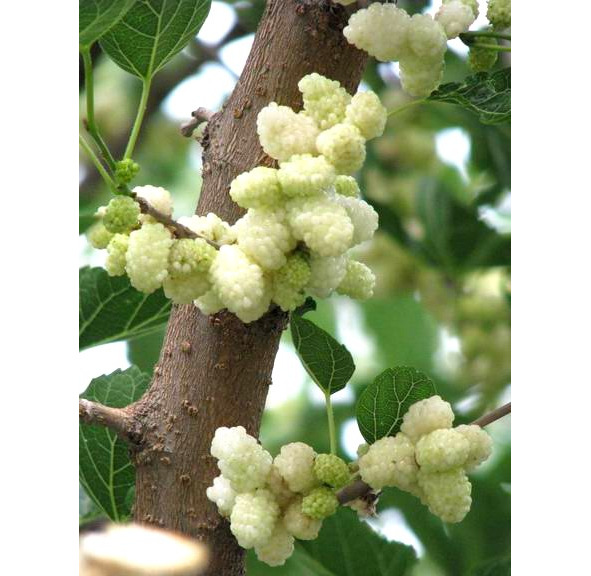
White Mulberry
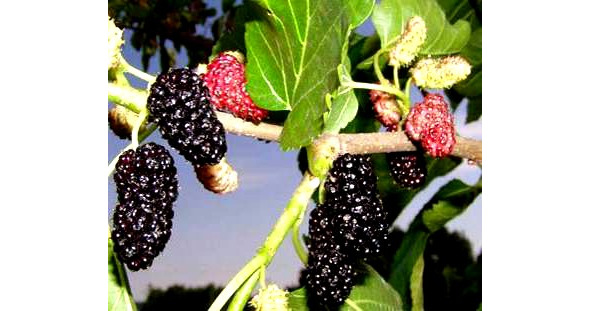
Mulberry black
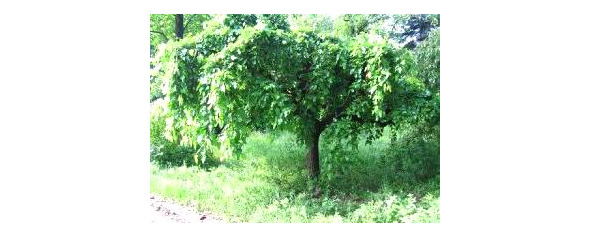
Mulberry silkworm
A very interesting situation is developing among the authors of the Indo-European language and Indo-Europeans and with the name of the mulberry tree. T. V. Gamkrelidze and V. V. Ivanov note that the «mulberry tree» with dark fruits is a characteristic fruit tree of the Mediterranean and South-West Asia; Western Asia is considered its ancient homeland. Large fruits… in a number of highlands of Central Asia and Central Asia (in the Pamirs) are used for food (flour is replaced from dried mulberry fruits, replacing flour from grain), leaves are used for livestock feed, and wood is valued as a building material.» But in a number of Indo-European dialects that have lost the old word (like Indo-Iranian languages), the name of the mulberry tree is transferred to blackberries. So in Greece (where both mulberry and blackberry grow) they have one name – moroy (already at Homer), and in Armenia mor, mori, moreni – blackberry (although the mulberry grows here too), Latin (morus – mulberry, morun – the fruit of the mulberry tree and blackberry).»
The strange thing about this situation is that if the ancestral home of the Indo-Europeans was Asia Minor (the ancient homeland of the mulberry tree), then in the new territories the Indo-Europeans did not make sense to call this name anything else besides the well-known plant that grew on their ancestral home. And, nevertheless, despite the fact that mulberry is a tree of the «Near Asian ancestral home», that flour is made from its fruits in the Pamirs, Iran is generally the birthplace of a wild mulberry tree with black fruits (morus nigra), as well as Afghanistan that in India (as in China) is an ancient culture, «in Indo-Iranian dialects, the ancient Indo-European name has been preserved to denote a blackberry and only a blackberry, while the mulberry tree is characterized by completely different names that have nothing to do with the first.» T. V. Gamkrelidze and V. V. Ivanov believe that the tree was given a new name in connection with the culture of breeding silkworms on it.»
The whole paradox is that the culture of breeding silkworms is associated with morus alba – a tree with white fruits, whose homeland is China, where it was first used to produce silkworm cocoons. On a tree with black fruits – morus nigra, whose homeland is Iran and Afghanistan, these worms do not live. So it is not at all clear why the tree that grew on the proposed ancestral home in Asia Minor and from the fruits of which they began to make flour in the new homeland, suddenly found a name here associated with silkworms that have nothing to do with it.
A different conclusion would be logical here. The name of the blackberry —
morus was primary, and subsequently, when promoting the Indo-Europeans in the territory of its distribution, the mulberry became so called because of the similarity of its berries to blackberries.
The distribution range of the blackberry is huge. Only in Russia 52 species of this berry are known: Nessa blackberry, or cumanica, growing in the forest and forest-steppe zone of the European part of Russia; cut blackberry – in the Baltic states, Belarus, Lipetsk region; bluish blackberry or burn, growing throughout the European part of our country, except the Far North, as well as in the Caucasus and
Central Asia, etc. It is possible that for blackberry this name – morus – was not at all monopolistic, because along with it, the rosaceous family includes such berries as polar meadow (princess, mamura or raspberry arctic) and cloudberry (moroska) (chamaemorus locke). Is the name of this beautiful northern berry, outwardly similar to a blackberry and different from it only in its honey color, connected with the ancient morus (this is how it is called «morus» in Sweden).
Blackberry, a subgenus of the Eubatus genus Rubus (raspberries, blackberries) is a family of Rosaceae. Shrubs with perennial rhizomes and biennial elevated shoots, usually covered with thorns. Fruits – prefabricated, juicy drupes, black or black-red, in many species with a bluish coating. Over 200 species are known that are common in North America and Eurasia; in the USSR – 42 species, mainly in the Caucasus, in the south of Ukraine and in Central Asia. These include: Caucasian blackberry (R. sausicus), bloody blackberry (R. sanguineus), long-fruited blackberry (R. dolichocarpus), gray blackberry (R. caesius). Fruits contain 4—8% sugars, 0.8—1.4% acids, vitamin C and carotene. Used in fresh and dried form, for processing.
Конец ознакомительного фрагмента.
Текст предоставлен ООО «Литрес».
Прочитайте эту книгу целиком, купив полную легальную версию на Литрес.
Безопасно оплатить книгу можно банковской картой Visa, MasterCard, Maestro, со счета мобильного телефона, с платежного терминала, в салоне МТС или Связной, через PayPal, WebMoney, Яндекс.Деньги, QIWI Кошелек, бонусными картами или другим удобным Вам способом.
Вы ознакомились с фрагментом книги.
Для бесплатного чтения открыта только часть текста.
Приобретайте полный текст книги у нашего партнера:
Полная версия книги
Всего 10 форматов



